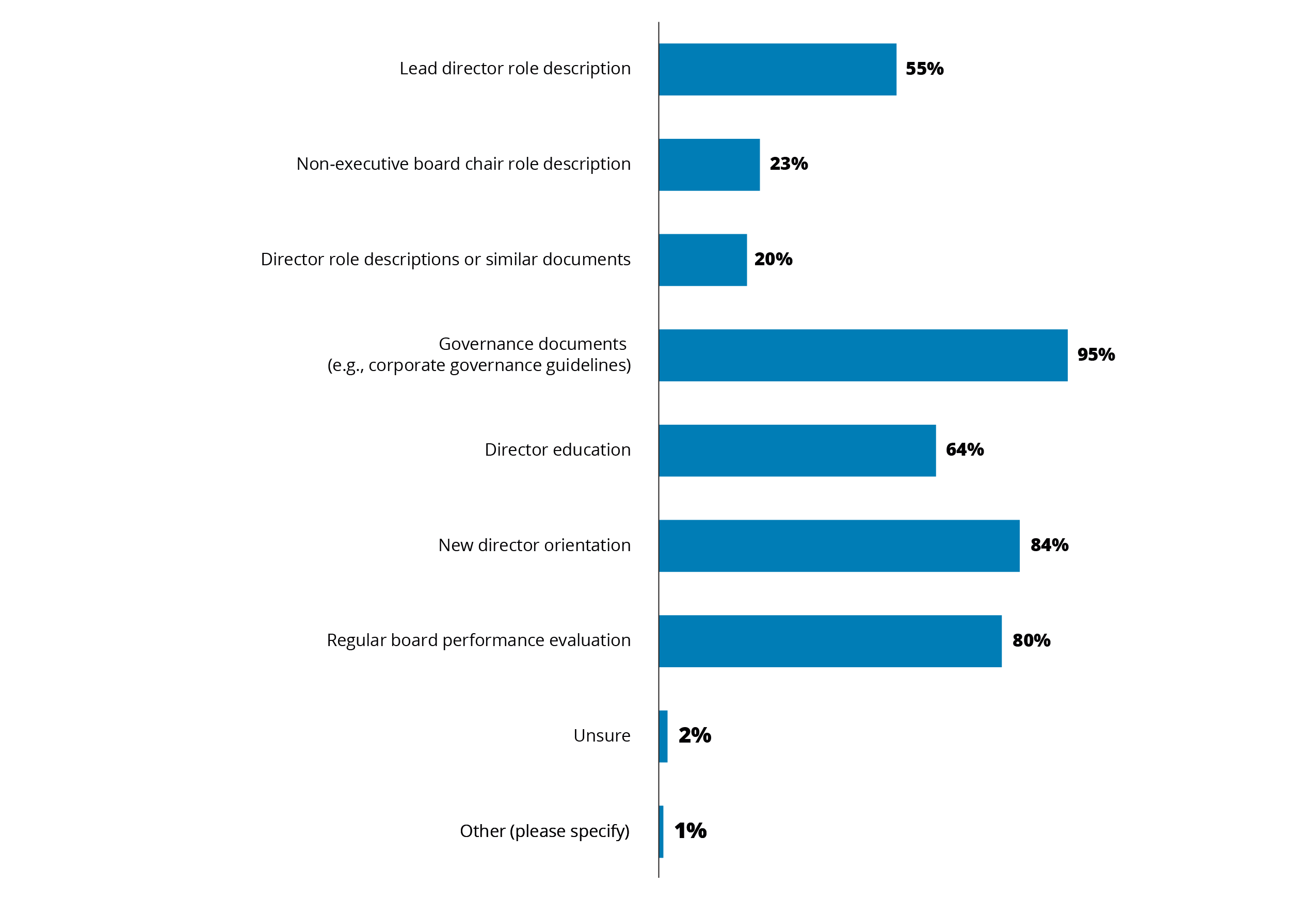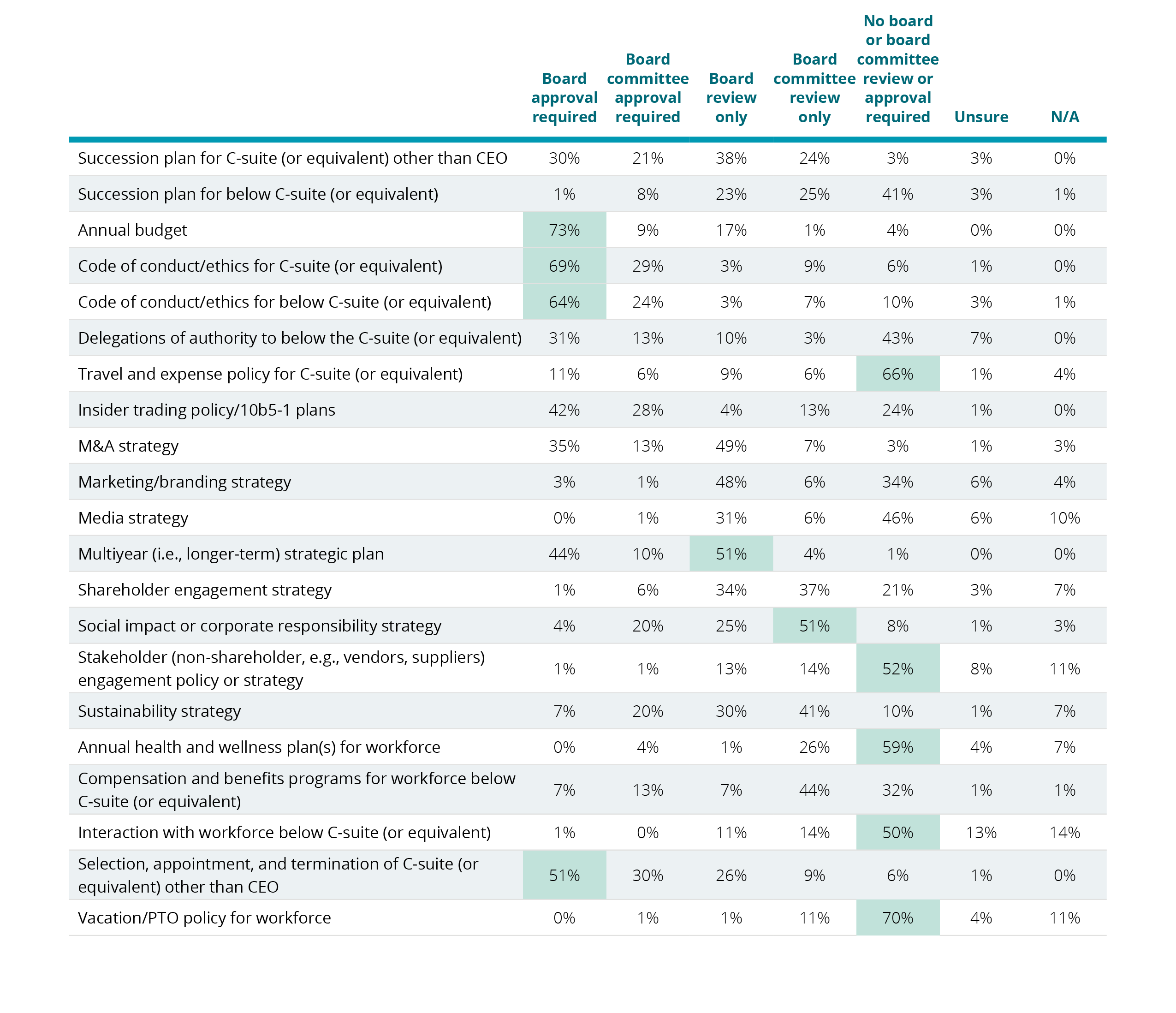Evolving lines of responsibility between the board and management has been saved
Perspectives
Evolving lines of responsibility between the board and management
Board Practices Quarterly, March 2024
By Natalie Cooper, Bob Lamm, and Randi Val Morrison
As the business environment continues to evolve in complexity, so does the oversight role of boards. At the same time, investor, regulator, and other stakeholder expectations of board involvement in certain aspects of the business, including aspects traditionally within management’s sole purview, are changing in ways that may blur the lines of responsibility between the two. Ultimately, management’s job is to manage, whereas the board’s role is to oversee. Effective oversight relies upon maintaining clear lines of responsibility between the board and management.
This Board Practices Quarterly presents findings from a survey of members of the Society for Corporate Governance on the board’s leadership structure, independence, and involvement in a number of business matters, including activities related to corporate strategy, human capital, risk and risk management, and operations.
Highlights of survey findings
Respondents, primarily corporate secretaries, in-house counsel, and other in-house governance professionals, represent 101 public companies of varying sizes and industries1 and the findings pertain to these companies. The actual number of responses for each question is provided. Some survey results may not sum to 100% as questions may have allowed respondents to select multiple answers. Where applicable, commentary has been included to highlight differences among respondent demographics.
What practices does your company utilize to establish a mutual understanding among the board and management of their respective roles and responsibilities? [Select all that apply] (98 responses)
Companies commonly rely on their governance documents, such as corporate governance guidelines, along with other practices, to delineate board vs. management responsibilities. Notably, of companies with a lead director (46% of all companies), 55% have a lead director role description. In comparison, of those with a non-executive chair (16% of all companies), 23% have a description for that role. The greatest variation among market caps was with respect to having director role descriptions, reported by 10% of large-caps and 30% of mid-caps.

Indicate the approval authority of your board with respect to the development/update of the following activities. [Select all that apply] (71 responses)
Among market caps, the greatest variations pertained to:
- Board committee approval required for:
- Succession plan for C-suite (or equivalent) other than CEO, reported by 32% of large-caps and 9% of mid-caps
- Sustainability strategy, reported by 32% of large-caps and 11% of mid-caps
- Code of conduct/ethics for below C-suite (or equivalent), reported by 13% of large-caps and 32% of mid-caps
- Board committee review only for compensation and benefits programs for workforce below C-suite (or equivalent), reported by 35% of large-caps and 54% of mid-caps
- No board or board committee review or approval required for shareholder engagement strategy, reported by 32% of large-caps and 11% of mid-caps

Endnote
1 Public company respondent market capitalization as of December 2023: 42% large-cap (which includes mega- and large-cap) (> $10 billion); 51% mid-cap ($2 billion to $10 billion); and 8% small-cap (which includes small-, micro-, and nano-cap) (< $2 billion). Respondent industry breakdown: 26% financial services; 24% energy, resources, and industrials; 23% consumer; 15% technology, media, and telecommunications; and 13% life sciences and health care.
Small-cap and private company findings have been omitted from this report and the accompanying demographics report due to limited respondent population.
Recommendations
Board Practices Quarterly
Insights and benchmarking data for board practices
Framing the future of corporate governance
Deloitte Governance Framework


